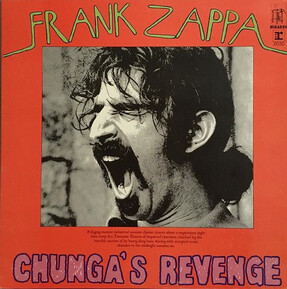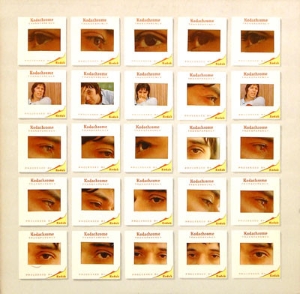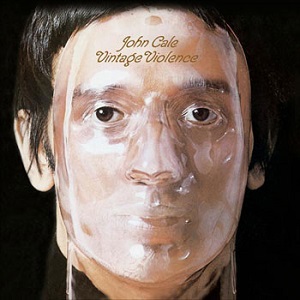
Terrence Mitchell "Terry" Riley is an American composer and performing musician best known as a pioneer of the minimalist school of composition. Influenced by jazz and Indian classical music, his work became notable for its innovative use of repetition, tape music techniques, improvisation, and delay systems. His best known works are the 1964 composition In C and the 1969 album A Rainbow in Curved Air, both considered landmarks of minimalism and important influences on experimental music, rock, and contemporary electronic music. Subsequent works such as Shri Camel (1980) explored just intonation.

John Davies Cale is a Welsh musician, composer, and record producer who was a founding member of the American rock band the Velvet Underground. Over his six-decade career, Cale has worked in various styles across rock, drone, classical, avant-garde and electronic music.

Child Is Father to the Man is the debut album by Blood, Sweat & Tears, released in February 1968. It reached number 47 on the Billboard pop albums chart in the United States.

Santana is the debut studio album by American Latin rock band Santana. It was released on August 22, 1969. Over half of the album's length is composed of instrumental music, recorded by what was originally a purely free-form jam band. At the suggestion of manager Bill Graham, the band took to writing more conventional songs for more impact, but managed to retain the essence of improvisation in the music.

Chunga's Revenge is the third solo album, and eleventh album counting the work of his band The Mothers of Invention, by Frank Zappa, released on October 23, 1970. Zappa's first effort of the 1970s marks the first appearance of former Turtles members Mark Volman and Howard Kaylan - nicknamed Flo & Eddie - on a Zappa record, and signals the dawn of a controversial epoch in Zappa's history. Chunga's Revenge represents a shift from both the satirical political commentary of his 1960s work with The Mothers of Invention, and the jazz fusion of Hot Rats.

The Stooges is the debut studio album by American rock band the Stooges, released on August 5, 1969 by Elektra Records. Considered a landmark proto-punk release, the album peaked at number 106 on the US Billboard Top 200 Albums chart. The tracks "I Wanna Be Your Dog" and "1969" were released as singles; "1969" was featured on Rolling Stone's list of the "100 Greatest Guitar Songs" at number 35. In 2020, it was ranked number 488 on Rolling Stone's 500 Greatest Albums of All Time.
Robert Wayne Colomby is a jazz-rock fusion drummer, record producer and television presenter. He is best known as an original member of the group Blood, Sweat & Tears, which he co-founded in 1967. He has also played with many other musical artists.

Eric Clapton is the debut solo studio album by English rock musician Eric Clapton, released in August 1970 by Atco and Polydor Records.

Romantic Warrior is a studio album by the American jazz fusion band Return to Forever, their first recorded for Columbia Records, after releasing their previous four albums on Polydor. In February 1976, the group retreated to Caribou Ranch near Nederland, Colorado to record. It was the first album to remove the "featuring Chick Corea" credit from beside the band name on the album cover. Despite the music being more dense and avant-garde than the funkier No Mystery, it remains the band's highest selling album with over 500,000 copies sold in the US alone.

The Academy in Peril is the second solo album by Welsh musician John Cale, released in July 1972 by record label Reprise.

A Rainbow in Curved Air is the third album by American composer Terry Riley, released in 1969 on CBS Records. The title track consists of Riley's overdubbed improvisations on several keyboard and percussion instruments, including electric organ, electric harpsichord, dumbec, and tambourine. The B-side "Poppy Nogood and the Phantom Band" is a saxophone-based drone piece featuring tape loops and edits, drawing on Riley's all-night improvisatory performances in the 1960s.

Blood, Sweat & Tears 3 is the third album by the band Blood, Sweat & Tears, released in June 1970.

B, S & T; 4 is the fourth album by the band Blood, Sweat & Tears, released in June 1971. It peaked at number 10 on the Billboard Pop albums chart.

Vintage Violence is the debut solo studio album by Welsh musician John Cale, released on 25 March 1970 by Columbia Records. Cale and Lewis Merenstein produced the album.

Sabotage/Live is a live album by John Cale. It was recorded at CBGB, New York on 13–16 June 1979, and released by SPY Records in December 1979.

Luxury You Can Afford is the seventh studio album by Joe Cocker, released in 1978 on Asylum Records, his only release for that label.

New York in the 1960s: Sun Blindness Music, better known as Sun Blindness Music, is an album by John Cale released in 2001. It is the first of a loose anthology of experimental albums recorded during Cale's tenure with the Theatre of Eternal Music during the mid-1960s.

The Velvet Underground was an American rock band formed in New York City in 1964. It originally comprised singer and guitarist Lou Reed, Welsh multi-instrumentalist John Cale, guitarist Sterling Morrison, and drummer Angus MacLise. In 1965, MacLise was replaced by Moe Tucker, who played on most of the band's recordings. Though their integration of rock and the avant-garde resulted in little commercial success, they are now widely regarded as one of the most influential bands in rock, underground, experimental, and alternative music. Their provocative subject matter, musical experiments, and nihilistic attitude was also instrumental in the development of punk rock, new wave and several other genres.

Will O' the Wisp is the sixth studio album by Leon Russell. The album was released in 1975 on Shelter Records. It peaked at No. 30 on the Billboard albums chart and remained on the chart for 40 weeks. The album cover was designed and illustrated by artist/actor Gailard Sartain.
Adam Miller was an American singer-songwriter, active in the 1970s.


















